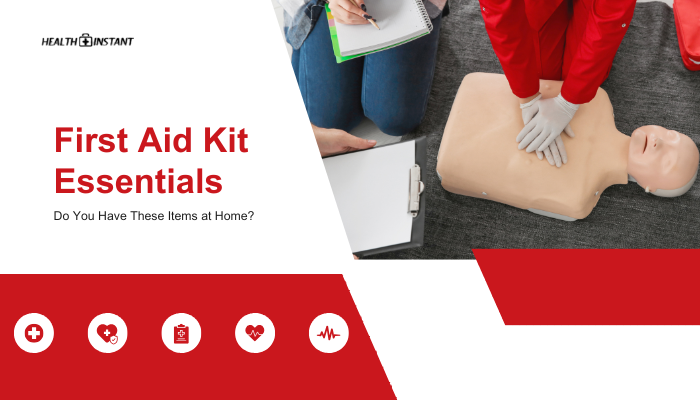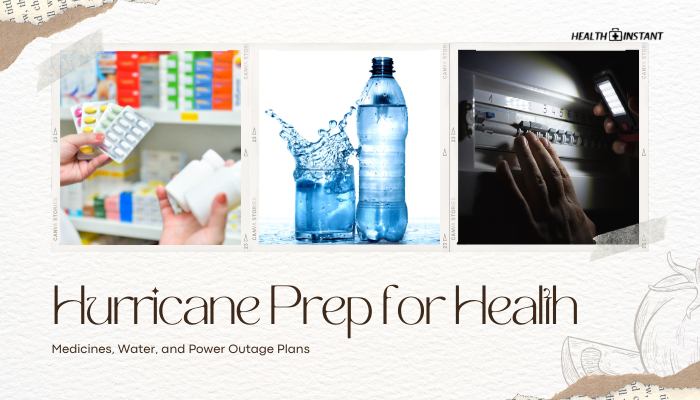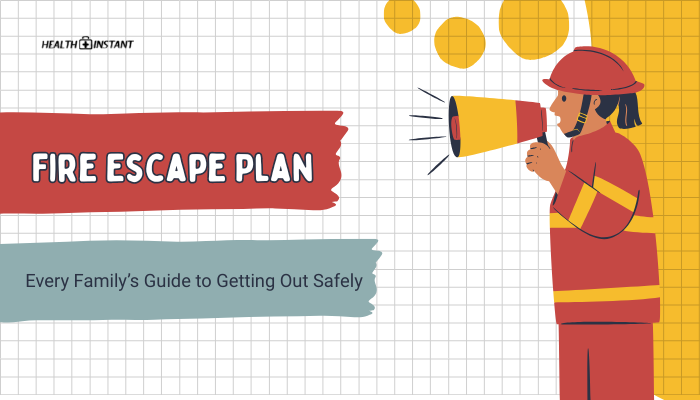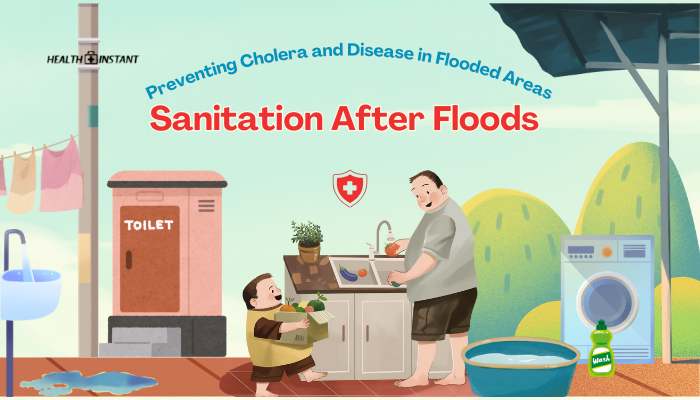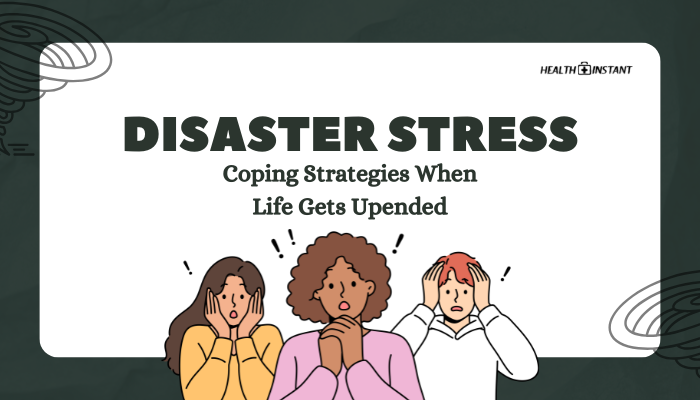Introduction
As global temperatures rise, extreme weather events are becoming more frequent and intense. Heatwaves, wildfires, and floods have escalated in scale and severity, posing direct threats to human health. High temperatures can lead to heat exhaustion or heatstroke, wildfires degrade air quality and increase respiratory issues, and floods spread waterborne infections and cause injuries.
This article explores the connections between climate change and these extreme events, focusing on how individuals and communities can protect themselves. From personal preparation (staying hydrated and creating emergency kits) to broader policy shifts (reducing greenhouse gas emissions and building resilient infrastructure), every level of action matters. By understanding these hazards and preventive strategies, we can adapt to evolving climate challenges while safeguarding public health.
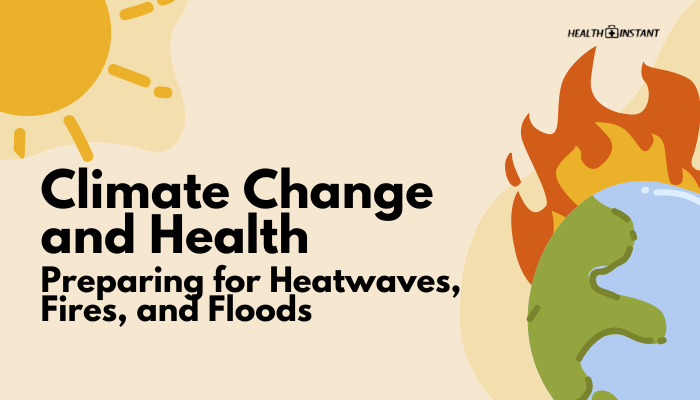
How Climate Change Influences Extreme Events
Climate change arises predominantly from greenhouse gas emissions—carbon dioxide, methane, nitrous oxide—that trap heat in the Earth’s atmosphere. As global temperatures climb:
- Heatwaves extend over more days, with higher peak temperatures.
- Droughts become more likely or severe in certain regions, fueling wildfires.
- Extreme Rainfall events intensify in other regions, leading to flooding.
Although no single weather event is solely caused by climate change, the warming environment tilts the odds toward more frequent and extreme episodes. These conditions profoundly affect human well-being, especially among vulnerable populations like the elderly, children, or those with chronic illnesses.
Health Impacts of Heatwaves
Who Is Most at Risk?
- Older Adults: Reduced ability to regulate body temperature.
- Young Children: Limited capacity to understand or respond to heat exposure.
- Chronic Illness Patients: Conditions like heart disease or diabetes may worsen under extreme heat.
- Outdoor Workers: Prolonged exposure raises susceptibility to heat-related illness.
- Urban Residents: Cities often experience the “urban heat island” effect, where concrete and asphalt trap heat overnight.
Preventive Measures During Heatwaves
- Stay Hydrated: Drink plenty of water, avoiding excessive caffeine or alcohol.
- Cool Indoor Spaces: Use air conditioning if possible; otherwise, create cross-ventilation with fans and open windows at cooler times of the day.
- Avoid Midday Sun: Plan outdoor activities during mornings or evenings. Wear loose, light-colored clothing and a hat if venturing outside.
- Check on Neighbors: The elderly or those with limited mobility may struggle to cope alone. Offer assistance or remind them to stay hydrated.
- Recognize Heat Illness Signs: Look for symptoms such as confusion, dizziness, or lack of sweating in high heat, indicating heatstroke, which requires immediate medical attention.
Wildfires and Air Quality
Health Hazards from Smoke
Wildfires produce dense smoke containing fine particulate matter (PM2.5), carbon monoxide, and other toxins. Inhaling smoky air can trigger:
- Respiratory Problems: Worsening of asthma, bronchitis, or COPD.
- Eye and Throat Irritation: Burning eyes or sore throats from smoke particles.
- Cardiovascular Risks: Elevated risk of heart attacks or arrhythmias among susceptible individuals.
Reducing Exposure to Wildfire Smoke
- Stay Indoors: Close windows, doors, and use air filtration systems if possible.
- Use N95 Masks: These respirators filter out fine smoke particles better than standard surgical masks.
- Monitor Air Quality Index (AQI): Adjust outdoor activities based on official advisories; the higher the AQI, the more hazardous the air.
- Create a Clean Room: Choose one room in your home to seal off from outside air, using portable air cleaners or wet towels near vents to reduce smoke infiltration.
Floods and Waterborne Diseases
Immediate Dangers of Flooding
During heavy rainfall or storm surges, floods can form rapidly, presenting:
- Physical Hazards: Drowning, injuries from debris or collapsed structures.
- Electric Shocks: Downed power lines or submerged electrical sources pose lethal risks.
- Vehicle-Related Accidents: Driving through floodwaters is dangerous; even shallow moving water can sweep cars away.
Post-Flood Health Concerns
After floodwaters recede:
- Contaminated Water Supply: Sewage or chemical spills can taint drinking water, leading to gastrointestinal illnesses (e.g., cholera, E. coli).
- Mold and Structural Damage: Damp conditions foster mold growth, aggravating respiratory diseases.
- Mosquito-Borne Illnesses: Stagnant water can become breeding sites for mosquitoes carrying diseases like dengue or West Nile virus.
Community-Level Preparation and Resilience
Developing resilience requires collaboration among government, businesses, and local residents:
- Emergency Alerts and Early Warnings: Timely communication helps people evacuate or adapt.
- Infrastructure Improvements: Storm drains, flood barriers, and green spaces mitigate flood impacts and urban heat.
- Evacuation Routes: Clearly marked and frequently updated to ensure safe egress during crises.
- Community Drills: Regular rehearsals of heatwave, wildfire, or flood response procedures can save lives.
Moreover, forging robust social support networks—neighbors checking on each other, community shelters—builds unity and helps the vulnerable cope during extreme weather.
Policy and Global Collaboration
Climate change solutions span beyond personal actions. Governments and international agencies shape policies, allocate funds for research, and negotiate emission targets. Key measures:
- Reducing Greenhouse Gases: Meeting emissions targets to limit global temperature rise.
- Adapting Infrastructure: Cities incorporate climate resilience into building codes, coastal defenses, and land-use planning.
- Supporting Vulnerable Nations: Wealthier countries can fund adaptation programs in developing areas hardest hit by climate impacts.
- Public-Private Partnerships: Encouraging corporate sectors to invest in green technology and climate-friendly initiatives.
Ultimately, integrated climate action—both mitigation (reducing emissions) and adaptation (preparing for impacts)—will protect public health on a large scale.
Practical Tips for Individuals and Families
- Stay Informed
- Track local weather forecasts, fire warnings, and flood advisories.
- Sign up for emergency alerts via text, email, or apps.
- Track local weather forecasts, fire warnings, and flood advisories.
- Assemble Emergency Kits
- Basic supplies: water, non-perishable food, flashlight, batteries, first aid.
- Copies of important documents in waterproof containers.
- Basic supplies: water, non-perishable food, flashlight, batteries, first aid.
- Draft a Family Plan
- Identify safe indoor areas (for wildfires), evacuation routes (for floods), and community cooling centers (for heatwaves).
- Assign roles: who checks on older relatives, who gathers kits, etc.
- Identify safe indoor areas (for wildfires), evacuation routes (for floods), and community cooling centers (for heatwaves).
- Maintain Insurance and Home Resilience
- Check if your homeowners or renters insurance covers flood or fire damage.
- Update roofing, windows, or landscaping to better withstand extreme weather.
- Check if your homeowners or renters insurance covers flood or fire damage.
- Engage Locally
- Support local initiatives like tree-planting or neighborhood watch for vulnerable neighbors.
- Attend city council meetings that discuss climate adaptation projects.
- Support local initiatives like tree-planting or neighborhood watch for vulnerable neighbors.
Conclusion
Heatwaves, wildfires, and floods exemplify how climate change threatens health in tangible, immediate ways. While these events may vary in severity across regions, the underlying issues tie back to rising global temperatures and shifting weather patterns.
Collective adaptation is necessary: individuals can adopt safe hygiene, build emergency preparedness, and promote better environmental practices, while larger systemic shifts in policy, infrastructure, and global cooperation bolster resilience at scale.
By combining personal readiness with community networks and informed governance, societies can mitigate the worst impacts of a warming planet. With bold steps to curb emissions and fortify critical systems, we can limit health risks and secure a safer environment for current and future generations.
References
- World Health Organization. (2021). Climate change and health.
- Intergovernmental Panel on Climate Change (IPCC). (2021). Sixth Assessment Report.
- Centers for Disease Control and Prevention. (2020). Climate effects on health.
- Haines A, Ebi K, Smith KR, Woodward A. (2014). Health risks of climate change: act now or pay later. Lancet.
- NASA. (2019). Global climate change: vital signs of the planet.
- US EPA. (2022). Climate change indicators: weather and climate.
- World Meteorological Organization. (2022). State of the global climate.
Disclaimer: This content is for informational purposes. Always refer to local guidelines and professional advice when preparing for or responding to climate-related emergencies.

